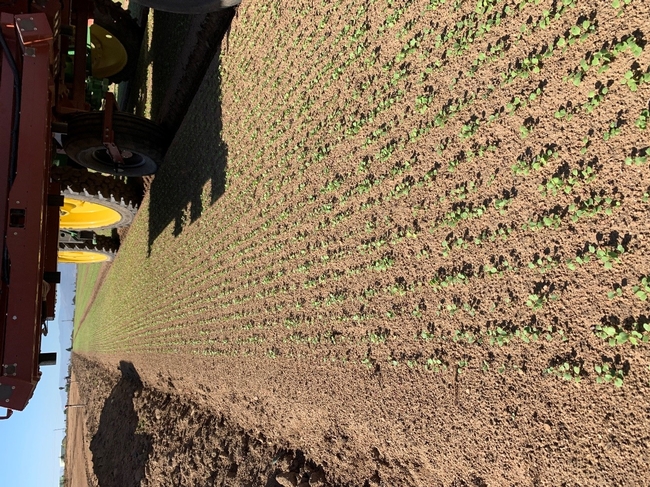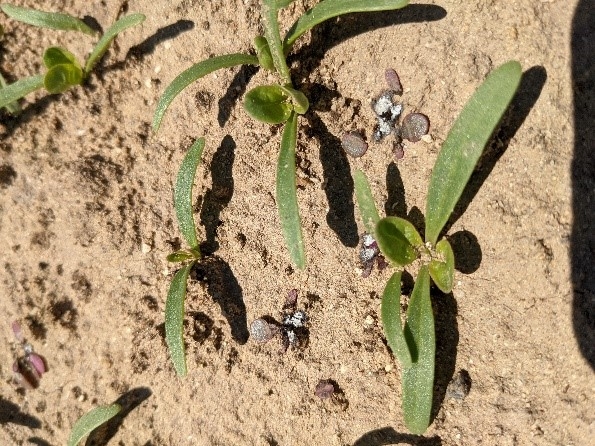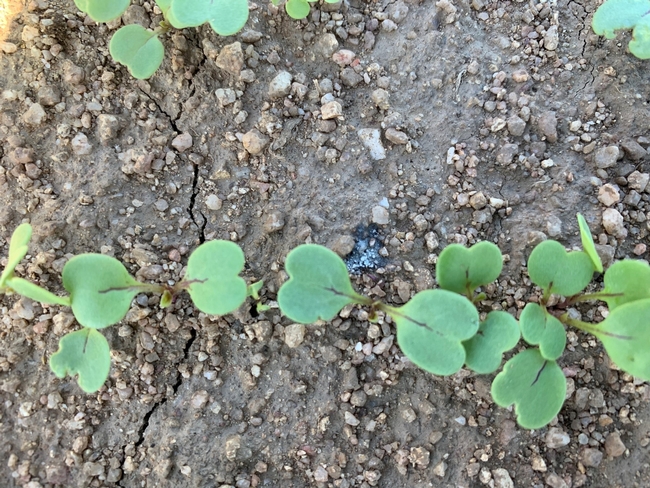Photo 1. High density planting of arugula with 30 seedlines on an 80-inch wide bed and planted with 4-5 million seed per acre creates the need for great precision to remove weeds while safeguarding the crop.
Given that the autoweeders mentioned above often leave weeds in the zone right next to the crop plant, we have often discussed the need for machines that can precisely and safely remove weeds right next to the keeper plants. Ideas included the use of precision and pinpoint application of an herbicide or hot oil to the adjacent weeds or removal by lasers. This concept is now a reality because in 2022, there are now machines that employ these ideas. At the 2022 Automated Technology Field Day held in Salinas on June 8th Tensorfield Agriculture (https://tensorfield.ag/) demonstrated their machine that used precision application of hot oil and Carbon Robotics (https://carbonrobotics.com/) demonstrated their machine which used lasers to remove unwanted weeds.
Photo 2. Central growing point of purslane burned by lasers in a high density planting of spinach.
In 2022 Carbon Robotics made the first deliveries of their laser weeder to growers producing onions, carrots and lettuce in the western US. The machine that is in use in the Salinas Valley is three 80-inch beds wide. It is capable of removing weeds from high density plantings such as baby lettuce, spinach and spring mix (Photo 1). The lasers focus energy to the growing point of young weed plants (Photo 2). It is most efficient for the machine to treat young weeds which allows it to spend less time and energy to kill each plant and thereby move more quickly through the field. One of the great advantages of the machine is its ability to remove weeds right next to the crop plants (Photo 3). Weeds growing right next to the crop plants are the most expensive weeds to remove; this is particularly the case in high density plantings.
The bottom line is that automated weeding has come a long way in just a few short years. The split blade autoweeders greatly improved the capacity to remove a significant number of weeds from production fields. The advent of autoweeders that can precisely apply an herbicide or laser energy to weeds that are right up against crop plants takes autoweeding to a whole new level and opens the possibility for machine weeding to remove sufficient weeds from a field so that little to no follow-up hand weeding is necessary during a crop production cycle. This is truly extraordinary.
Richard Smith is the University of California Cooperative Extension Vegetable Crop Production and Weed Science Farm Advisor for Monterey, Santa Cruz and San Benito counties.


